Explore Port Said - Egypt Travel, Africa
Port Said, Egypt's vibrant port city, stands as a gateway to the Suez Canal, one of the world's most critical maritime routes. Founded in 1859 to serve the canal, Port Said quickly became a bustling hub of trade and cultural exchange. Its strategic location at the northern entrance of the Suez Canal has shaped its rich history and diverse cultural heritage. Today, Port Said invites travelers to explore its unique blend of historical landmarks, modern attractions, and lively local culture.
Population: Approximately 680,000 in 2023.
Economy: Port Said's economy is based mostly on trade, thanks to its strategic location by the Suez Canal. Key sectors include shipping, logistics, manufacturing, and tourism, fueling the city's vibrant economic landscape.
Landmarks: Famous for the Port Said Lighthouse, Port Said Museum, and the Fort El-Muwaylah.
Egypt
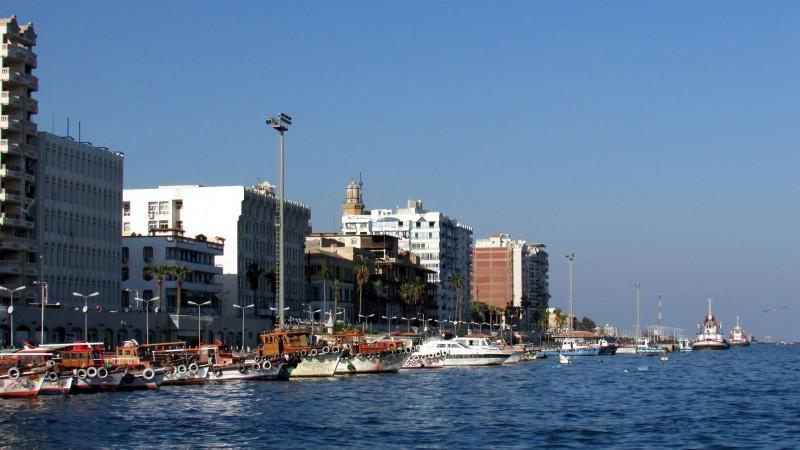
Overview of Port Said
History & Culture Influence
Port Said was founded in the mid-19th century during the building of the Suez Canal, which marked a watershed point in world trade. Its history is marked by a series of significant events and figures, including the prominent role it played during World War I and II. Beyond historical heritage, Port Said's cultural landscape reflects a rich tapestry of influences. The city’s architecture showcases a mix of colonial and contemporary styles, a testament to its diverse past. Landmarks such as the Port Said Lighthouse and historic buildings along the waterfront offer glimpses into the city’s storied past. The fusion of Egyptian traditions with international influences creates a unique cultural atmosphere that is both welcoming and intriguing.
Interaction with The Locals
Port Said is home to a varied and vibrant population of over 680,000 people. As a major port city in Egypt, its citizens come from various backgrounds, contributing to a rich cultural tapestry. The local community is known for its hospitality and vibrant street life, reflecting the city's blend of historical significance and modern energy.
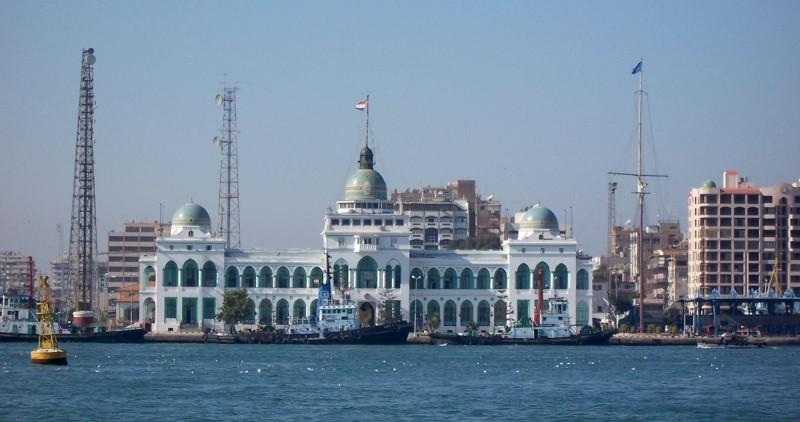
A normal day at Port Said Port - © Britannica
Top Attractions in Port Said
Port Said Lighthouse
The Port Said Lighthouse stands as a beacon of maritime history and a prominent symbol of the city. Established in the 19th century, this iconic structure guides ships navigating the busy waters of the Suez Canal. Its historic significance and picturesque views make it a must-visit landmark for travelers interested in Port Said’s maritime heritage.
Port Said Museum
A visit to the Port Said Museum is vital for gaining a better grasp of the city's past. The museum showcases an array of artifacts, exhibits, and historical memorabilia related to the city’s maritime and cultural history. Exploring its collections provides valuable insights into the city’s past and enhances the overall travel experience.
Fort El-Muwaylah
Fort El-Muwaylah is another historical gem in Port Said, offering a glimpse into the city’s military past. This fortification, strategically positioned to guard the Suez Canal, reflects the city’s historical significance in regional defense. Visiting the fort allows travelers to appreciate its historical role and enjoy panoramic views of the surrounding area.
Old Port Said District
Wander through the Old Port Said District to experience the city’s traditional charm. This neighborhood is distinguished for its antique architecture, thriving markets, and lively street life. Exploring the district provides a sense of the city’s cultural heritage and allows visitors to engage with its lively atmosphere.
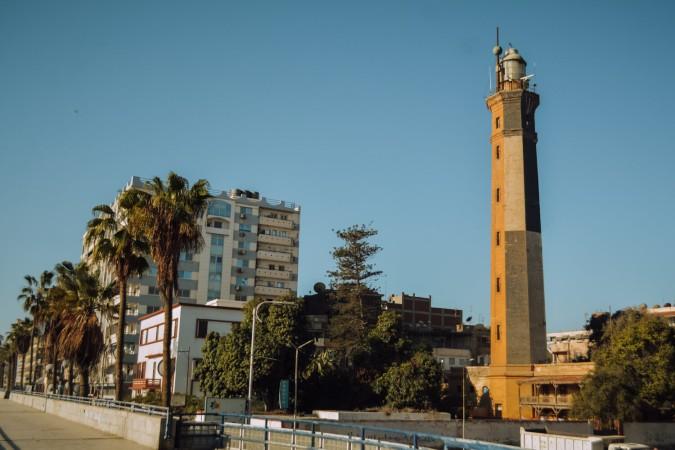
Port Said Lighthouse - © Egypt Tourism
Must-Try Dishes in Port Said
- Koshari: No visit to Port Said is complete without sampling koshari, Egypt's beloved street food. This hearty dish combines lentils, rice, and pasta, topped with a spiced tomato sauce and crispy onions. It’s a filling and flavorful meal that reflects the city's culinary traditions.
- Ful Medames: Another staple of Egyptian cuisine is ful medames, a savory stew made from fava beans and typically enjoyed with pita bread. This dish is both nutritious and satisfying, often served for breakfast or as a hearty snack.
- Maqluba: For a traditional and flavorful meal, try maqluba, a layered rice dish cooked with meat (usually chicken or lamb) and vegetables. The dish is seasoned with a blend of spices and then flipped upside down before serving, revealing a beautifully arranged presentation.
- Molokhia: Molokhia is a unique and traditional Egyptian dish made from jute leaves, cooked into a rich, green stew. Often paired with chicken or rabbit, this dish offers a distinctive taste of Egyptian cuisine and is a favorite among locals.
- Stuffed Grape Leaves: Stuffed grape leaves, known locally as warak enab, are another popular dish in Port Said. These tender grape leaves are filled with a mixture of rice, herbs, and sometimes meat, then rolled and cooked in a tangy tomato sauce.
- Basbousa: For dessert, indulge in basbousa, a sweet and moist semolina cake soaked in sugar syrup. This traditional Egyptian treat is often garnished with coconut or almonds and is a popular choice for ending a meal on a sweet note.

Stuffed Grape Leaves - © The Olive and The Sea
Festivals & Local Celebrations
Port Said International Festival
The Port Said International Festival is a major annual event celebrating the city’s rich cultural heritage. Held every year, this festival features a vibrant mix of music, dance, and traditional performances. It brings together artists and performers from around the world, showcasing a diverse array of cultural expressions and creating a lively atmosphere throughout the city.
Suez Canal Anniversary
The Suez Canal Anniversary is a significant celebration marking the opening of the Suez Canal, a crucial maritime route. This event is commemorated with grand parades, exhibitions, and special ceremonies. The anniversary festivities highlight the canal’s historical importance and offer visitors a chance to learn more about its impact on global trade.
Eid al-Fitr
Eid al-Fitr is one of the most widely celebrated celebrations in Port Said. This festive event commemorates the conclusion of Ramadan, the Islamic holy month of fasting. The festival is characterized by communal prayers, festive meals, and vibrant street celebrations. It’s a time for family gatherings, giving charity, and enjoying traditional sweets and dishes.
Eid al-Adha
Eid al-Adha, also known as the Festival of Sacrifice, is another important celebration in Port Said. It commemorates the willingness of Ibrahim (Abraham) to sacrifice his son in obedience to God. The festival includes special prayers, the ritual sacrifice of animals, and communal feasts. It’s a time for reflection, charity, and festive gatherings.
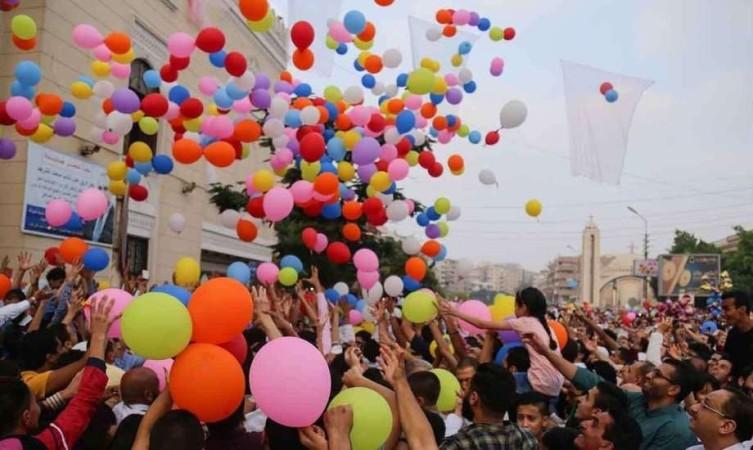
Egyptians celebrate Eid al-Fitr - © Sada Elbalad english
What to Do in Port Said
- Boat Tour at Suez Canal: A boat excursion allows you to see the magnificence of the Suez Canal. These tours provide a unique view of one of the world’s most important waterways, offering insights into its history and significance while you enjoy scenic vistas and informative commentary.
- Relax at Port Said Beach: Enjoy a day at Port Said Beach, where you can swim in the Mediterranean Sea, sunbathe on the sandy shores, or simply relax and take in the beautiful coastal views. The beach is well-maintained and provides a great escape from the city’s hustle.
- Explore Jardins de Port Said: Visit Jardins de Port Said, a serene park perfect for leisurely strolls and relaxation. The park’s green spaces and scenic views offer a peaceful retreat and a chance to unwind amidst nature.
- Explore Old Port Said District: Discover the charm of the Old Port Said District. This area is known for its historic architecture, vibrant street life, and bustling markets. It’s an excellent place to experience the city’s traditional ambiance and shop for unique souvenirs.
- Visit the Port Said Museum: Explore the Port Said Museum to delve into the city’s rich maritime and cultural history. The museum’s exhibits feature artifacts and stories that highlight Port Said’s significant role in global trade and local heritage.
Shopping in Port Said
- Port Said Souk: Dive into the vibrant atmosphere of Port Said Souk, the city’s bustling market where you can find a wide range of goods. From traditional textiles and handicrafts to spices and fresh produce, this souk is a perfect place to experience local commerce and pick up unique souvenirs.
- Al-Farouq Market: Explore Al-Farouq Market for a diverse shopping experience. This bustling market sells everything from apparel and accessories to household items and gadgets. Its bustling atmosphere and diversity make it an ideal location for both shopping and people-watching.
- El-Tahrir Street: Stroll along El-Tahrir Street, known for its array of shops and boutiques. This street offers a mix of traditional and contemporary stores, where you can find everything from local crafts to stylish apparel. It’s a great place to explore the city’s shopping scene and discover unique finds.
- Al-Ahram Street: Visit Al-Ahram Street for a variety of shopping options, including specialty stores and local shops. The street is lined with vendors selling everything from traditional Egyptian goods to modern accessories, offering a diverse shopping experience.
- Souq Al-Jomaa: Visit Souq Al-Jomaa on Fridays for a unique traditional Egyptian market experience. This market features a variety of goods, including clothing, accessories, and local produce. It’s a bustling and vibrant spot to shop and soak up the local atmosphere.

Boat Tour at Suez Canal - © Nasser Youth Movement
Weather in Port Said: Best Time to Visit
Spring in Port Said
Spring in Port Said is distinguished by warm and pleasant temperatures ranging from 20°C to 30°C (68°F to 86°F). This season is perfect for exploring outdoor attractions and enjoying the city's cultural events. With comfortable weather and blooming scenery, spring is a popular time for tourists who wish to experience the city's gardens, parks, and historical sites without the heat of summer.
Summer in Port Said
Summer in Port Said brings hot temperatures often exceeding 30°C (86°F). The high heat and sunny skies make it the ideal season for beachgoers and those looking to enjoy the Mediterranean Sea. Port Said’s beaches become a central attraction, and many visitors flock to coastal resorts and beachfront restaurants. Despite the heat, summer festivals and outdoor activities are in full swing, offering vibrant experiences for those who enjoy the summer energy.
Autumn in Port Said
Autumn brings a slow cooling, with temperatures ranging from 20°C to 30°C. This season is favored by travelers who prefer mild weather for sightseeing and outdoor activities. Autumn also brings a range of cultural festivals and events, making it an excellent time for tourists to explore Port Said's historical sites, enjoy local cuisine, and partake in seasonal celebrations.
Winter in Port Said
Winter in Port Said offers cooler temperatures between 10°C and 20°C (50°F to 68°F). Although it’s cooler, the weather remains relatively mild compared to many other destinations. Winter is a great time for cultural tourism, with fewer crowds and comfortable conditions for visiting museums, historical landmarks, and participating in local festivals.
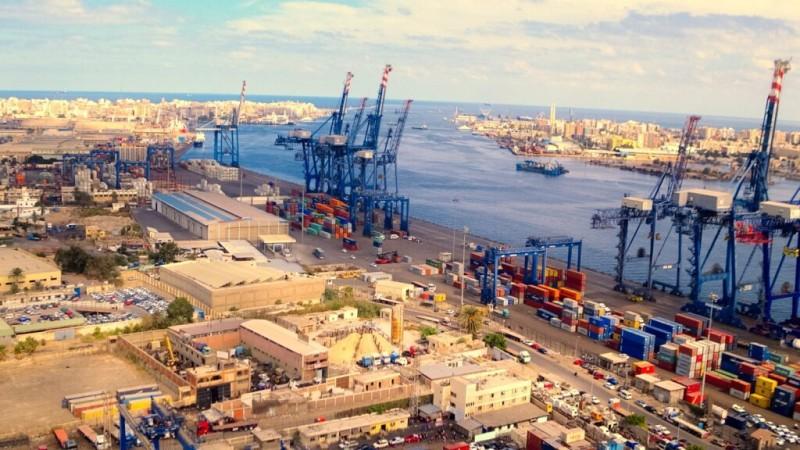
Busy hours at Port Said Port - © Suez Canal Economic Zone
Essential Travel Information
Getting Around Port Said
- Public Buses: Public buses in Port Said offer an affordable way to get around the city. They cover various routes and are a convenient option for traveling to different parts of the city.
- Taxis: Taxis are widely accessible and offer a versatile and pleasant mode of transportation. It's common practice to negotiate the fare before starting the journey or use a metered taxi to avoid misunderstandings.
- Car Rentals: For greater flexibility, consider car rentals. Various rental agencies in Port Said offer vehicles for short-term use, allowing you to explore the city and its surroundings at your own pace.
- Bicycles: Renting a bicycle is another enjoyable way to explore Port Said, especially in areas with pleasant weather. Cycling provides a leisurely way to see the city’s sights while enjoying the outdoors.
ATM & Banking Services
In Port Said, accessing banking services is convenient with numerous ATMs scattered throughout the city, allowing for easy cash withdrawals in local currency. Currency exchange can be handled at various locations, including banks, exchange bureaus, and some major hotels, ensuring you can convert your money as needed. It’s advisable to exchange some currency before arrival for immediate needs, although services are readily accessible once you’re in the city.
Where to Stay in Port Said
- Luxury Hotels: Port Said offers a range of luxury hotels that provide premium amenities and services. These high-end establishments feature spacious rooms, fine dining options, and additional comforts such as swimming pools and spa facilities. They are ideal for travelers seeking an upscale experience with top-notch service.
- Mid-Range Hotels: For a balance of comfort and cost, mid-range hotels in Port Said offer well-appointed rooms and essential amenities at reasonable prices. These accommodations cater to both business and leisure travelers, providing a comfortable stay without breaking the bank.
- Budget Lodgings: Travelers on a budget can find budget accommodations including hostels, guesthouses, and basic hotels. These options provide essential services and a comfortable place to stay, making them suitable for those who prioritize affordability while exploring the city.
Articles for you

Explore Yala National Park - Sri Lanka Travel, Asia
Tucked away in Sri Lanka’s southeastern corner, Yala National Park is where wild nature meets deep tradition. Known worldwide for its leopard population, the park is also home to elephants, sloth bears, crocodiles, and hundreds of bird species. Beyond wildlife, Yala opens doors to a cultural landscape dotted with ancient temples, Buddhist ruins, and coastal villages. For travelers seeking more than just a safari, Yala offers a chance to explore eco-tourism, local communities, and sacred heritage sites.
Population: The Yala National Park area doesn’t have a human population.
Economy: The economy around Yala National Park thrives on a blend of eco-tourism, agriculture, and local services. Safari tours, eco-lodges, and cultural experiences drive steady income for nearby towns like Tissamaharama and Kataragama, supporting thousands of families.
Landmarks: Famous for Block I of Yala and wildlife encounters, including elephants, sloth bears, crocodiles, and exotic bird species.

Explore Galle - Sri Lanka Travel, Asia
Nestled on Sri Lanka’s southern coastline, Galle is a vibrant city where history meets the sea. Its cobbled streets, colonial architecture, and serene beaches make it a must-visit destination for travelers seeking a blend of culture, adventure, and relaxation. A UNESCO World Heritage site, Galle captivates visitors with its Dutch Fort, bustling markets, and friendly locals. Whether you’re exploring the ramparts at sunset or savoring fresh seafood by the shore, Galle promises an unforgettable journey into Sri Lanka’s heritage.
Population: Approximately 113,000 in 2023.
Economy: Galle’s economy thrives on tourism, trade, and fisheries. The city’s historic fort, colonial architecture, and coastal charm draw thousands of international visitors each year, making tourism its main economic driver. Fishing remains vital for local livelihoods, supplying fresh seafood across the region.
Landmarks: Famous for the Galle Fort, Dutch Reformed Church & Maritime Museum, and Unawatuna Beach.

Explore Bentota - Sri Lanka Travel, Asia
Nestled along Sri Lanka’s southwestern coast, Bentota is a tropical paradise that blends golden beaches, vibrant culture, and thrilling adventures. Famous for its calm waters, luxury resorts, and scenic river estuary, Bentota has become a top destination for travelers seeking both relaxation and authentic experiences. From serene beach walks at sunrise to adrenaline-pumping water sports, this coastal town offers a perfect balance of leisure and exploration. With its proximity to Colombo and Galle, Bentota is easy to reach, making it an ideal stop for both short escapes and extended holidays.
Population: Approximately 37,000 in 2023.
Economy: Bentota’s economy thrives mainly on tourism, which drives local businesses such as hotels, restaurants, and wellness retreats. The town also benefits from fishing, coconut cultivation, and handicrafts like wood carving and batik textiles. Many residents rely on the growing demand for water sports and Ayurvedic treatments, making tourism the backbone of both income and employment in the area.
Landmarks: Famous for Bentota Beach, Bentota River Safari, and Kande Vihara Temple.

Explore Mirissa - Sri Lanka Travel, Asia
Mirissa is a charming coastal town on Sri Lanka’s southern shoreline. Known for its golden beaches, turquoise waters, and vibrant marine life, it has become a must-visit stop for travelers exploring the island. Many come for whale watching, surfing, and sunset views at Coconut Tree Hill, but Mirissa offers much more than postcard beauty. The fishing boats you see anchored by the bay carry generations of stories. Local traditions, delicious cuisine, and a laid-back rhythm of life shape every visitor’s experience.
Population: Approximately 4,700 in 2023.
Economy: Mirissa’s economy is largely shaped by its coastal location. Fishing has long been the backbone of local livelihoods, with generations relying on the Indian Ocean for income. In recent decades, tourism has become the main driver of growth, thanks to whale watching, surfing, and beachside hospitality.
Landmarks: Famous for Mirissa Beach, Coconut Tree Hill, and Parrot Rock Bridge.

Explore Nuwara Eliya - Sri Lanka Travel, Asia
Tucked away in the Central Highlands of Sri Lanka, Nuwara Eliya is often called “Little England”. With its rolling tea plantations, cool misty mornings, and colonial charm, this mountain town feels like a step into another world. Travelers come here to breathe fresh air, walk through flower gardens, sip the finest Ceylon Tea, and enjoy a pace of life far from the island’s busy cities. Whether you’re drawn by scenic landscapes, heritage architecture, or the warmth of its people, Nuwara Eliya is a destination that blends nature, culture, and history in perfect harmony.
Population: Approximately 781,000 in 2023.
Economy: Nuwara Eliya’s economy thrives mainly on tea production, as it sits in the heart of Sri Lanka’s central highlands, famous worldwide for Ceylon Tea. The city also benefits from a growing tourism industry, attracting visitors with its colonial charm, cool climate, and scenic landscapes.
Landmarks: Famous for Gregory Lake, Hakgala Botanical Garden, and Victoria Park.

Explore Sukau - Malaysia Travel, Asia
Nestled on the banks of the Kinabatangan River in Sabah, Malaysian Borneo, Sukau is a destination where wildlife, culture, and conservation come together. Known as one of Asia’s top spots for river safaris and eco-tourism, this quiet village offers a front-row seat to encounters with Bornean orangutans, pygmy elephants, proboscis monkeys, and exotic birdlife.
Population: Approximately 1,400 in 2019.
Economy: Sukau’s economy is shaped by its riverine location and natural resources. Traditionally, the Orang Sungai community relied on fishing, small-scale farming, and forest gathering for their livelihood. Today, the village has shifted toward eco-tourism, with river cruises, jungle trekking, and homestays providing income.
Landmarks: Famous for the Kinabatangan River cruises, Gomantong Caves, and Ox-bow lakes and wetlands.
